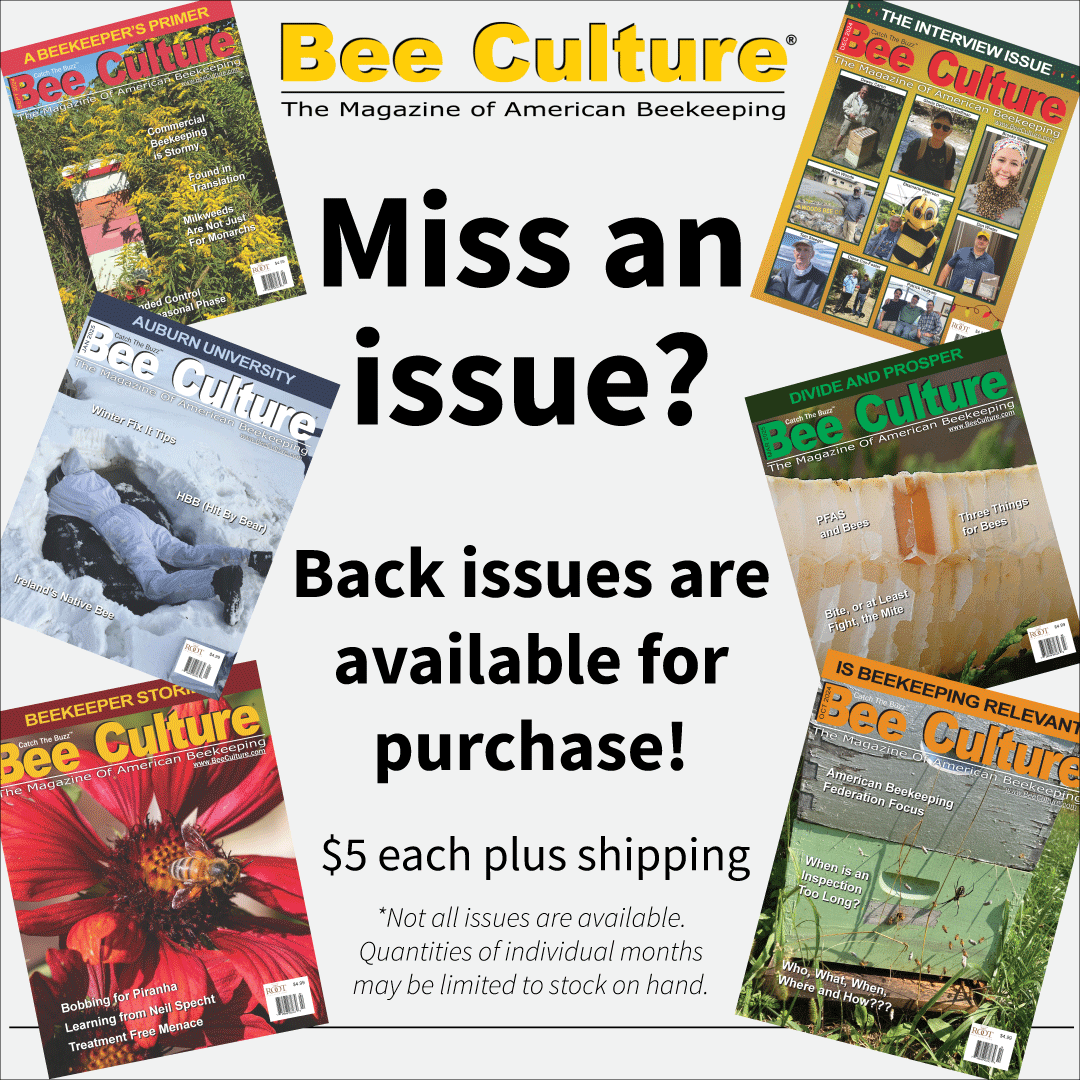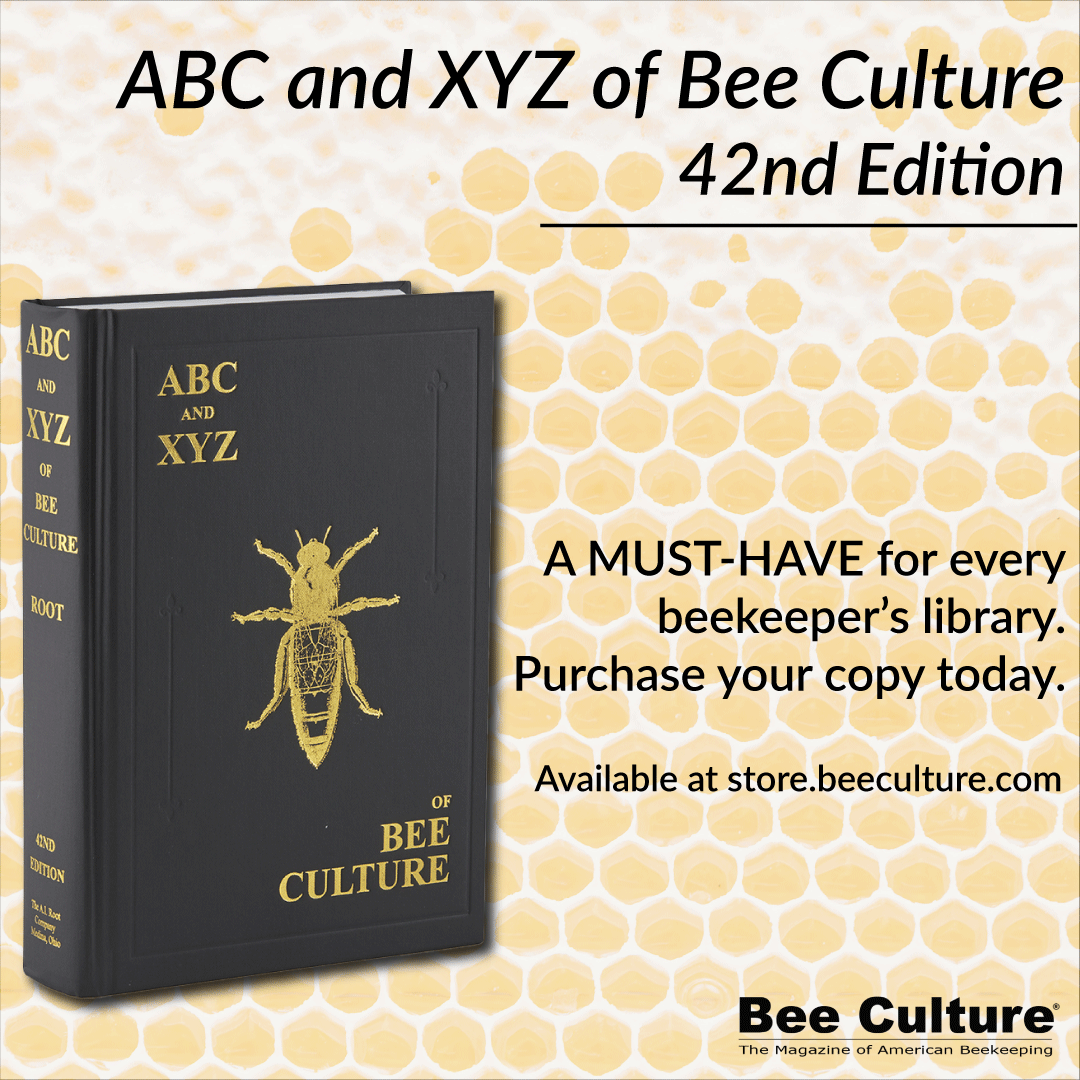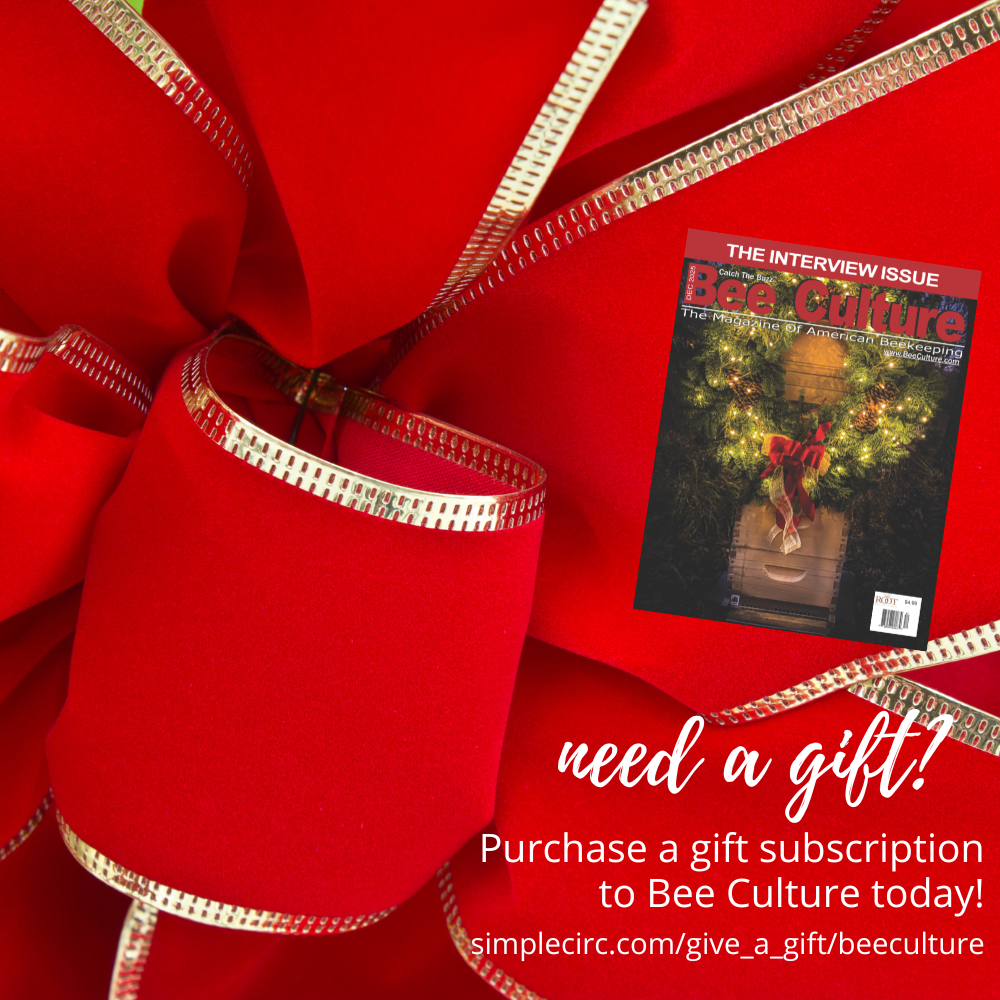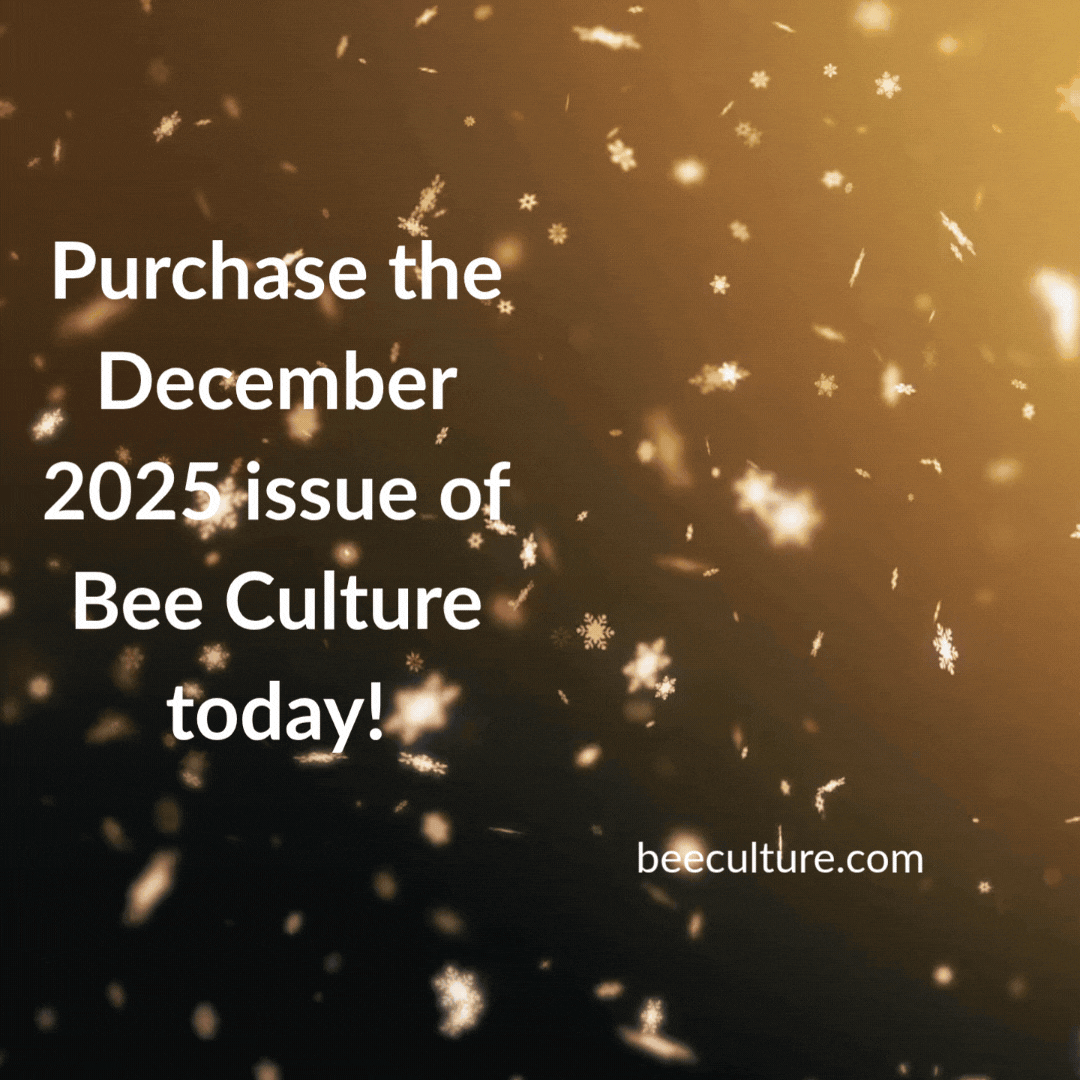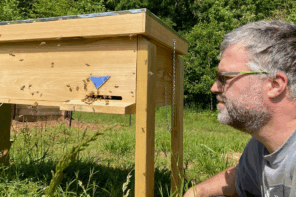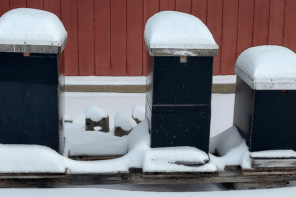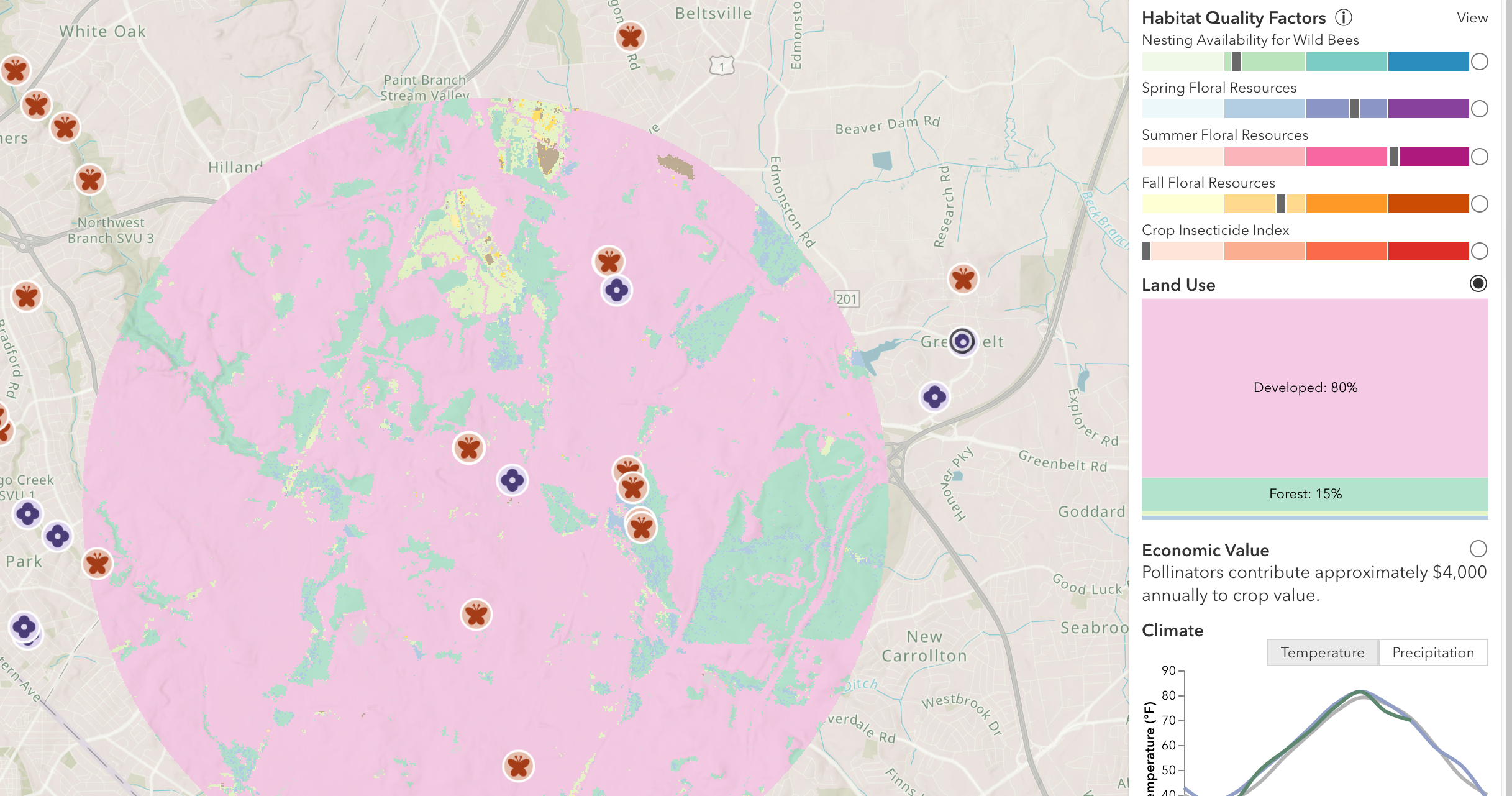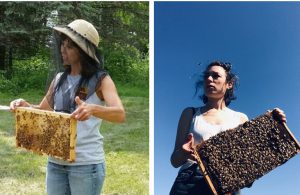
Authors
Becky Masterman led the UMN Bee Squad from 2013-2019 and currently alternates between acting as an advisor and worker bee for the program. Bridget Mendel joined the Bee Squad in 2013 and has led the program since 2020. Photos of Becky (left) and Bridget (right) looking for their respective hives.
Wasp Do You Know?
Becky Masterman & Bridget Mendel
With Winter approaching, your bees need less attention. Why not spend time learning about the bee family tree? Wasps and bees are close relatives and often cross paths. Some wasps forage for nectar on the same sorts of flowers as your honey bees, and often they are at the root of a misidentification where your neighbors generously offer you their compost bin yellowjacket nest, since you love bees so much.
Bees are classified in the insect Order Hymenoptera along with wasps and ants. Most winged members of the order share the characteristics of a narrow waist, aerodynamic wings that hook together while in flight, and modified ovipositors (egg-laying devices that evolved to saw, pierce or sting). Bees evolved from wasps, although the event timing is still being nailed down with the fossil record providing evidence of a bee-like wasp or wasp-like bee dating back to 100 million years ago (Rosa et al. 2021). Wasps feed on or parasitize other insects and spiders, but bees are specialized to feed exclusively on pollen and nectar, and thus have intimate, symbiotic relationships with flowers (Eaton 2021). We like how John Eaton describes the wasp-bee evolutionary relationship in his book titled Wasps: The astonishing diversity of a misunderstood insect (Eaton 2021).
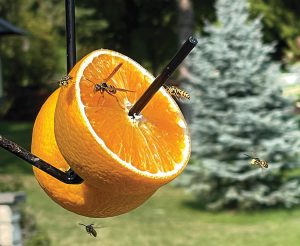
Where are the birds and butterflies? Late season food meant for birds and butterflies often ends up as wasp food. Photo credit: Rebecca Debertin
Just like the word bee refers to thousands of different species, so does the word wasp. Also like bees, most wasps are solitary nesters. Yellowjackets live in social colonies like your honey bees and are more likely than us to join a late Summer BBQ. The common name “yellowjacket” refers to four different wasp species in the family Vespidae including the non-native and invasive Vespula germanica (ESA Common Names Database). This non-native member of the wasp family tree tends to dominate wasp public relations, much to the frustration of wasp enthusiasts (Eaton, 2021). While a yellowjacket encounter is often unpleasant for humans, defensiveness is definitely not a trait shared by most wasps. A trait that they all share (even the defensive ones) is that they are beneficial in some way.
Really, beneficial wasps?
Bees with their branched hairs and specialized pollen collecting structures move pollen from flower to flower efficiently. Wasps, with their unbranched, sparse body hairs, move pollen too, albeit less efficiently. But just because your toddler does a weird job putting away their toys, doesn’t mean they shouldn’t put them away.
Some members of the over 80 different wasp families have actually evolved specialized roles in pollination. Just ask a fig tree, but not one was bred to self-fertilize for the California fig industry. The two native U.S. fig tree species each have their own exclusive fig wasp pollinator. These tiny wasps pollinate the fig flowers (which are inverted inside the fruits) while the tree provides a place for them to raise their young. This mutually beneficial relationship earned these wasps the US Fish & Wildlife Service Pollinator of the Month recognition (Moisset).
Wasps are notorious for their pest control abilities. Some wasps specialize in parasitism. The ins (using their modified ovipositor to inject eggs directly into an animal host) and outs (the developing larvae eating their way out of the host) are described in greater detail by Dylan Miller in a blog post referenced below. Wasps also control pests by hunting for food. Some of these specialized wasps have the nicknames of cicada or katydid killers; their appearance and solitary life history is worth a look. Some of the social predatory wasps, like yellowjackets, hornets and paper wasps, are efficient hunters and will help control the bugs in your garden. We encourage a visit to the University of Maryland’s Extension page for more predatory wasp information (Raupp et al 2021).
Wasps and your bees
Some of you have been reading this article waiting for the moment where we admit that yellowjackets are killing your honey bee colonies. But while these social predatory wasps might have a negative impact on your bees, a strong honey bee population is an excellent defense against them. The timing of most wasp troubles for honey bees is often later in the season when food becomes scarce for the wasps. A reduced entrance size that is easier to defend is best for your bees. If you find yellowjackets in your depopulated hive, we suspect that deadly varroa mites and the viruses they transmit were the potential culprit for weakening the hive, making it easily invaded by wasps.
But what, you ask, about that newsworthy hornet that took up so much space on the internet this past year? Oh yes, that one. The invasive giant hornet, also a member of the Vespidae family, can indeed depopulate a strong honey bee colony in mere hours. First detected in North America in 2019 and with a recent Washington sighting in August 2021, it is important to be aware of this potential invasive predator, while being mindful that in most parts of the country, there are no giant hornets present. There are certainly more urgent honey bee health threats (Evans et al. 2020). In fact, if we could make the Varroa mite two inches long, we would, because then no one would tell us mites aren’t a problem because they “don’t see any.” Side note, from the perspective of a honey bee, varroa mites are actually pretty big. We digress.
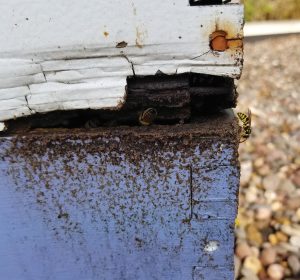
This deteriorating equipment provided an opportunity for both honey bees and wasps to rob the stored honey frames. The wax residue on the outside of the makeshift entrance is evidence that robbing took place. Photo credit Rebecca Masterman
Mistaken identity opportunities
Being a beekeeper means that you will likely hear sting stories at any social event you attend. Many involve people mowing lawns or drinking soda in August. We recommend gently defending the honey bee in these situations as yellowjackets are often the culprits. While providing enlightening evidence to the stingee, these interactions can support your agenda of centering the beauty and diversity of wasps and bees on all occasions. A practiced elevator pitch could highlight bee and wasp diversity, solitary versus social lifestyles and the importance of these beneficial insects for pollination as well as garden and crop protection. In his pro-wasp book, Eaton puts forth the argument that suburban and urban environments can invite unwanted stings and therefore a citizen movement towards native landscapes (no more wasp offending lawnmowers) and letting the parasitic wasps handle aphid invasions will support a more pollinator-friendly environment.
References
Brunno B. Rosa, Gabriel A.R. Melo, Apoid wasps (Hymenoptera: Apoidea) from mid-Cretaceous amber of northern Myanmar, Cretaceous Research, 2021, Volume 122, 104770, ISSN 0195-6671, https://doi.org/10.1016/j.cretres.2021.104770.
Eaton, E.. Wasps: The Astonishing Diversity of a Misunderstood Insect. Princeton University Press, 2021. JSTOR, www.jstor.org/stable/j.ctv15r58fd.
Evans, E. Lee, K. and Hahn, J. 2020 https://extension.umn.edu/yard-and-garden-news/what-you-need-know-about-invasive-giant-hornets
Entomological Society of America Common Names Database https://www.entsoc.org/common-names?title=yellowjacket
Moisset, B. https://www.fs.fed.us/wildflowers/pollinators/pollinator-of-the-month/fig_wasp.shtml
Miller, D. 2021 https://blogs.dal.ca/openthink/parasitic-wasps-darwins-ultimate-evil/
Raupp,M., Traunfeld, J. and Sargent, C. 2021 https://extension.umd.edu/resource/predatory-wasps
Acknowledgement
The authors would like to thank Dr. Marla Spivak for helpful edits and suggestions.


